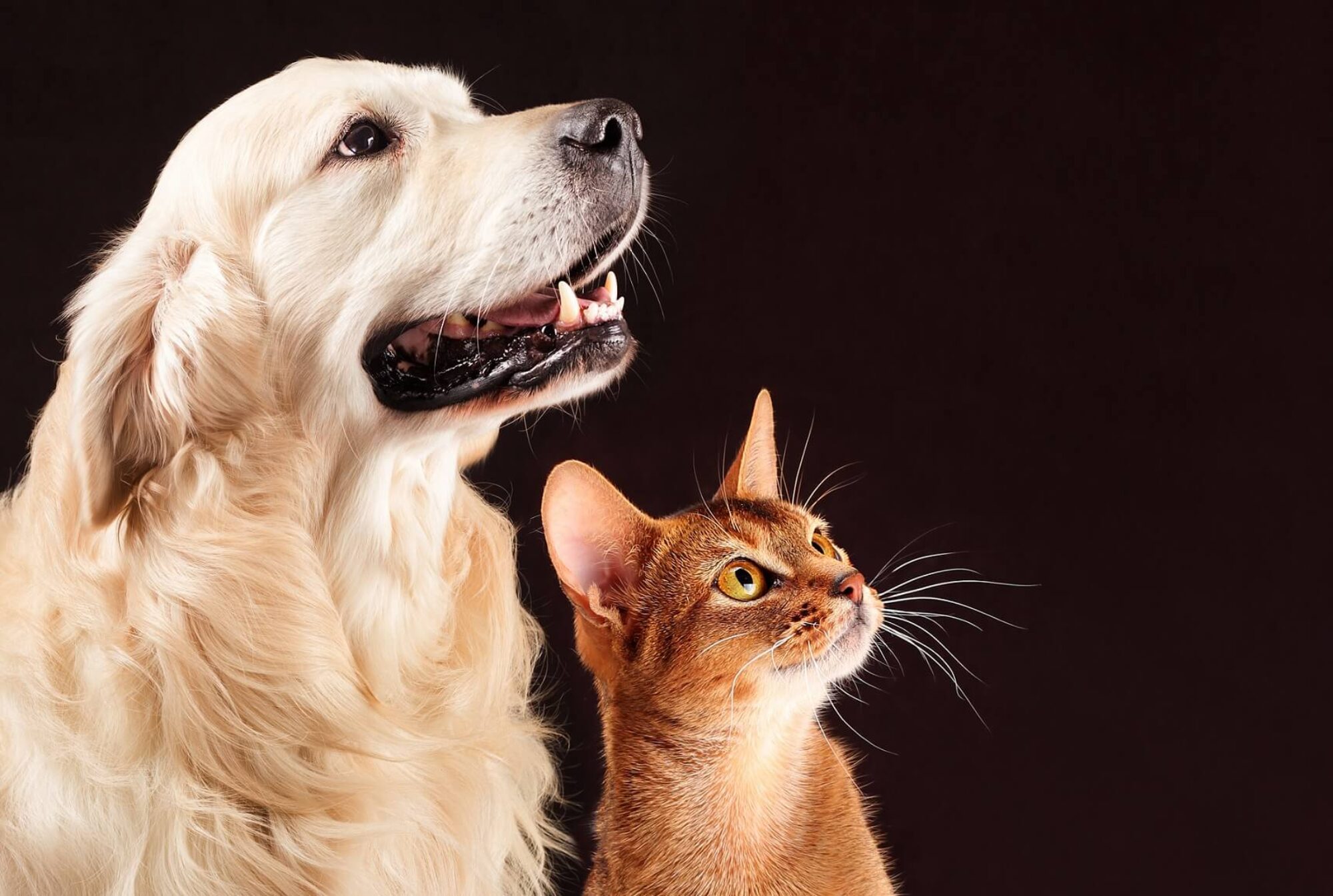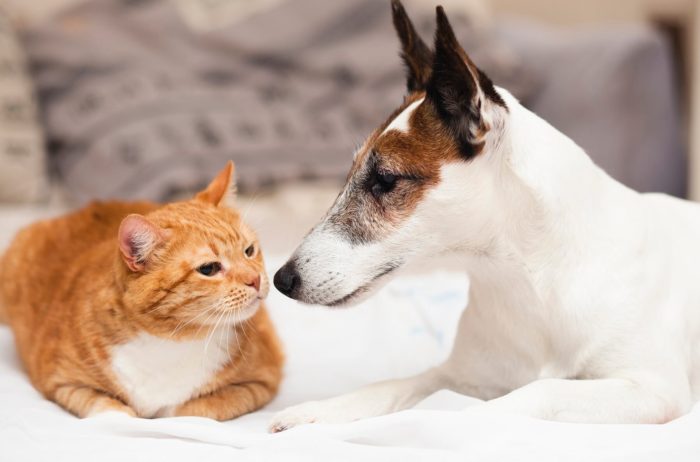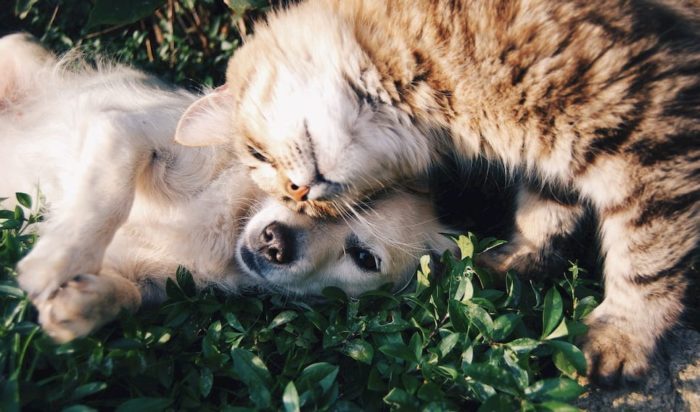Cat and dog introductions
“Fighting like cats and dogs” is such a common phrase in our culture that many of us may have accepted never bringing a new dog into a cat household or a new cat into a dog household for fear of how the relationship might turn out. Perhaps you already have a dog and cat pair in your home who are constantly at each other’s throats (quite scarily even literally). Are you wondering how to organize Cat and dog introductions appropriately?
Frightened cats hiding, hissing or swatting from under a bed or chasing dogs who cannot even settle in a room where a cat has previously been or stressed owners who are constantly breaking up fights does not have to be your reality. There’s no need for a dog and cat “to figure it out between themselves” or “put each other in their place”. We are guardians of the animals in our care and so much can be done to cultivate a cordial friendship between dogs and cats in the household.
Defining the goal for cat and dog introductions
My goal in a cat-dog relationship is to reach the point of live and let live. My ex-hunting sighthound and two cats go about their own lives in each other’s presence. They say hello by sniffing noses or butts after being away from each other. My hound will happily go on walks outdoors with my cats and ignore all their antics as they scale trees and dash right past him, choosing to pay attention to me instead. My dog and cats do not play with each other and they do not seek each other out for entertainment. My preference is for them to be able to comfortably live with each other and have a strong relationship with me as their primary carer. This article answearing the question “what is the best way to introduce a cat and dog” and describes the way in which you can achieve the same level of casual friendship between your dog and cat.
Scent and sound before sight
Before bringing your new dog or new cat home, swap towels between your home and the location of your new animal. If the cat is comfortable with physical contact, the towels may even be rubbed on the cat, especially on the scent glands before being brought into your training session. Always wear on you a treat pouch filled with food that your animal greatly values or simply carry a handful in your pocket. You will absolutely reach a day when you will no longer need to carry treat to be able to immediately capture and reinforce behaviour in a timely manner but we will start small.
Allow your dog to thoroughly investigate the new towels that smell of the cat you are looking to introduce. Say “good” in a clear, crisp and repeatable tone as he investigates the towel and immediately follow this by feeding the dog the high value treat close to you. You can click using a clicker instead of saying “good”, always following the sound of the click with feeding a treat. Continue to click and feed if the dog chooses to stay with you instead of returning back to the towel. So your instructions are: click when your dog investigates the towel, feed close to you and away from the towel. Repeat this process several times with the same towel or even bringing in fresh towels from the other location, moving to different locations as well. This is the start of a training protocol called click the trigger (also known by other names with variations).
Once you have numerous repetitions and sessions of clicking for investigating, hold back on the click just as the dog sniffs the towel. Your dog, wondering why you have not clicked yet when you have every single time before (surely just a mistake on your part), will look back at you. Click that precise moment of the head turning away from the towel and throw a party for the dog! Turning away from the scent of a cat is a huge moment of success to celebrate! Repeat this process over and over again, bringing more fresh towels that smell of the cat. Do not call your dog, shuffle your feet, tug on a lead or make kissing noises to turn your dog away from the smell of the cat. If you find you have to do so because the dog is far too fixated on the towel, go back to clicking for sniffing.
At the beggining of introducing cat to dog, over time you should find that the dog sniffs the towel or even just sees the towel and immediately turns to you to make you click and feed him. I call this ‘boomerang head’ and is absolutely pivotal to your success in teaching your dog that the mere smell of this specific cat is a cue to look at you and make you rain food into his mouth. We are no longer talking about a single measly treat. We are talking about raining food and praise to measure up to the huge task your dog has just completed by turning away from the smell of a cat. Use this moment to walk your dog away from the towel and do something else that is awesome with him like a scatterfeed or giving him a stuffed Kong.
So let’s say your efforts bring you to the point where your dog is happily ignoring the smell of a cat through all the towels you have brought home and choosing to work with you or go about his life away from the towels instead. You may choose to rub the towels on corners of cupboards and walls that your dog is likely to walk past in daily life in the home, just as a cat would if the cat was present in the environment. Some dogs may well start here and ignore the scent of the cat completely, which is even better. It’s time to now set your house up to bring the two species under the same roof.
Most important factor in introducing dog to cat? – Management is key
It only takes one chase for a dog to learn that chasing cats is extremely fun and for a cat to learn that the dog is a threat to fight off. So first things first in establishing a long-term good relationship in cat and dog introductions, is putting up good management measures to make sure the behaviours we want to see are far more likely to happen than the behaviours we don’t want to see.
When you want to conducting cat and dog introduction to each other, bringing a new animal into your home for the first time or trying to remedy a repaired relationship, all interactions must be under close supervision with good safety nets in place, no matter the distance between the animals or the duration of the interaction. This means that you will need tall barriers that cats cannot jump over like stacked well-fitted child gates, crates for either your dog or your cat, doors that cannot be opened by escape artists and several high places for the cat to reach that the dog cannot. During the following sessions, your dog should wear a muzzle if he is comfortable to do so and is able to eat through the muzzle as you feed as well as wear a well-fitted harness like the Perfect Fit or Balance harness. Your dog should also be on a lead or a long line which you hold at the other end. The use of all equipment here is to simply provide a safety net should the worst happen and your dog and cat are suddenly in each other’s faces, not as puppy training tools in themselves. Over time the need for such safety equipment will disappear as the deep reinforcement history for ‘live and let live’ grows and becomes the norm in the house.
You may choose to retain some degree of management for the rest of your animals’ lives like having separate places to be at night or when you are away.
Dogs and cats living together? Coexisting across a barrier
We will now use the click the trigger protocol to introduce your dog and cat together over several approximations such that your dog will automatically reorient to you when they spot your cat (the trigger). To begin with, time these training sessions after your dog has had his walks for the day and is ready to settle rather than first thing in the morning when energy levels are high all around. The approximations you choose may look like this:
- Smell of the towel
- The smell or sound of a cat on the other side of an opaque closed door
- The sight of a cat through a baby gate where a helper may be keeping the cat engaged at the other end of the room using something that minimises the cat’s movement like a lickimat
- Slowly encouraging the cat to move in parallel to the dog with a helper or a few spoons of something to lick laid out in a line
- Slowly encouraging the cat to walk away from or towards the dog using a helper or teaspoons placed with something licky
- Allowing either animal to approach closer in a managed way
- Changing times of day where energy levels vary, starting with the calmest time of the day.
In process of cat and dog introducing to each other, you must remember that the same set of criteria steps applies to the cat as well. Some cats may have learnt from previous experiences (or lack of) that they can show aggressive behaviours or simply just run away at the mere sight of a dog to increase distance between themselves and the dog. Starting at a distance where the cat is comfortable but able to perceive the presence of the dog and applying the method described above, we can change the cat’s behaviour to be more neutral towards the dog and choose to engage with us instead of running away or charging at the dog.
In process of cat and dog introducing to each other, you must remember that the same set of criteria steps applies to the cat as well. Some cats may have learnt from previous experiences (or lack of) that they can show aggressive behaviours or simply just run away at the mere sight of a dog to increase distance between themselves and the dog. Starting at a distance where the cat is comfortable but able to perceive the presence of the dog and applying the method described above, we can change the cat’s behaviour to be more neutral towards the dog and choose to engage with us instead of running away or charging at the dog.
In introducing cat to dog you may also choose to weave in other activities like feeding at a distance across a physical barrier if neither animal will show aggressive behaviours like food guarding. If your dog has a few favourite behaviours he loves to do for treats, you can cue those other behaviours at a distance from the cat as part of your training session (and likewise for the cat), teaching your dog to focus and engage with you whilst simultaneously learning to ignore the cat. As your training progresses and the sight, smell and sounds of a quiet cat who is not moving is no longer a trigger for your dog to become alert and fixate on the cat, you may choose to bring your cat into the lounge in a crate and rest in the same room as your dog during evening television watching time. The crate may turn into an open bed over time. If you can offer a quiet treat to both for settling in each other’s presence, please do so.
If at any point either animal is fixating on the other without being able to do anything else or is taking food more forcefully than they usually would, it’s time to increase distance and make things easier. Move to a more difficult approximation only when your dog and cat are happily doing other behaviours in the presence of each other at the easier approximation.
In process of cat and dog introducing to each other, you may have now reached a point when your dog is looking at you every time he sees your cat (which you continue to click and feed), disengaging from the cat across the physical barrier and is able to go about his life despite being able to see a moving cat on the other side of the barrier.
Mingling in the house without a barrier
We will fade out the barrier and integrate the two animals into each other lives using exactly the same process that we have used so far – slowly and in small approximations. Continue to use the click the trigger protocol, making some criteria easier (e.g. reinforcing heavily for smaller look-aways) whilst other things are getting tougher (e.g. cat now being a lot closer and more mobile). You may find that a cat walking away is different to a cat walking towards your dog. Similarly the cat’s speed of movement may matter too in how difficult it is for your dog to be able disengage. Your huge reinforcement history will help you here and continue to keep interactions short and sweet. Continue to teach your dog that disengaging from the cat is worth more than chasing the cat and, just as importantly, ensure that there are no opportunities for the dog to practice chasing at all at the same time. You may also now be in a position where your cat and dog living together, are settling to sleep in each other’s presence during various quiet times of the day.
Remember that learning is highly contextual. Indoor behaviour does not automatically occur outdoors and a dog who learns to coexist with one cat does not automatically stop chasing cats in the neighbourhood or even a new cat brought home in the future. The same applies for the cats in your home and the various dogs with whom they learn to coexist.
Would you like to start training with your cat? Can’t find the right course or trainer? [CLICK HERE AND START YOUR CAT TRAINING JOURNEY!]
See also other posts:
June 30, 2023
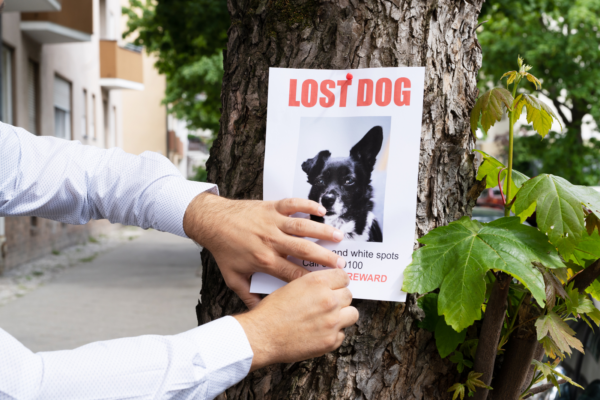
Get Your Lost Dog Back Home Quickly: Follow These 12 Tips for Success
Vacations favor more frequent and longer walks with our furry friends. We travel, visit new places. Summer makes us loosen our brakes and allow our…
June 30, 2023
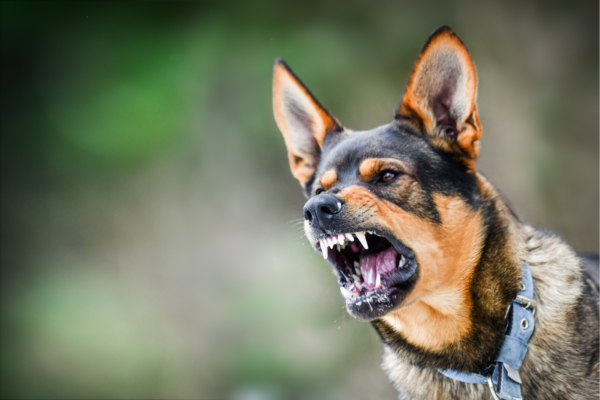
Managing Aggressive Dog Behavior: Tips for Peaceful Living
Living with an aggressive dog may seem challenging, but it can be peaceful and manageable with the right approach. One key aspect is to remain…
June 30, 2023
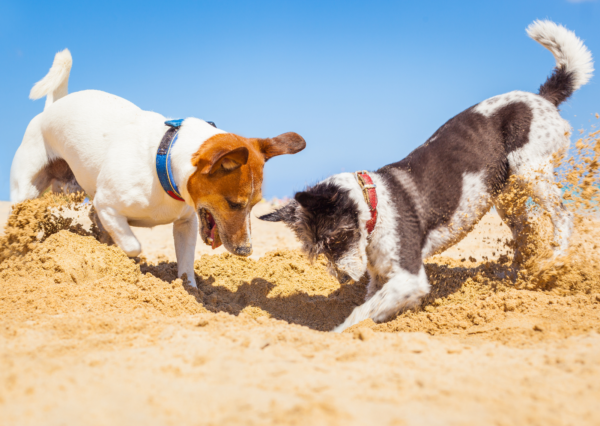
Unlocking the Secret to Successful Puppy Socialization: Quality over Quantity
Today, although the topic is very important, I will keep it brief. Socialization is a topic that could fill books or scientific papers. However, today…

